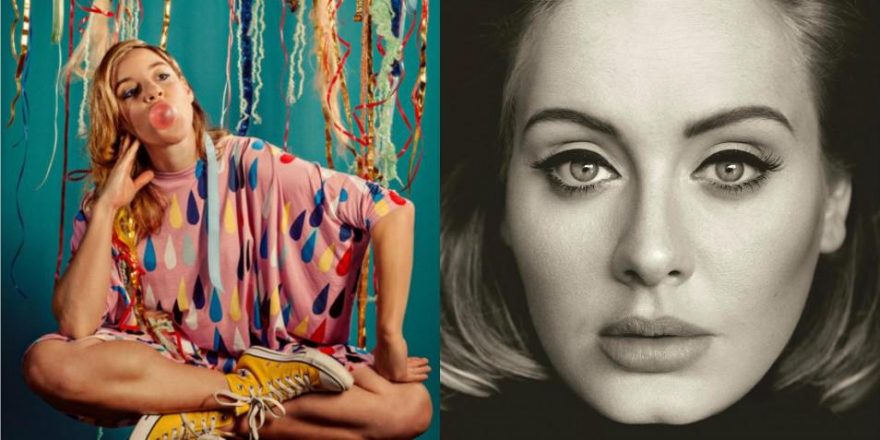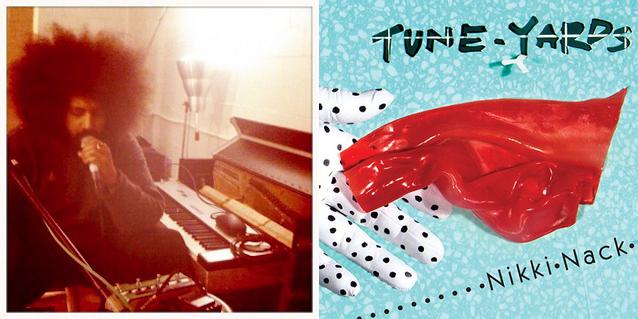They call it “rehabbing”: studying with a classical teacher to avoid damaging one’s voice, and to be able to continue singing with a healthy “instrument” night after night.
I spent a lot of the past year rehabbing. I took lessons with my teacher every time we came home from tour, often holding my tongue down with my pointer finger more than actually singing. I stopped speaking for many hours of the day. I got better about warming up; I steamed over tea cups and weird plastic contraptions, made annoying lip-buzzing noises. Still, over the summer, I took allergy medicine before a show, struggled through the performance, and woke up with a tiny squeak for a voice.
I lived with a lot of anxiety for most of 2015. Choosing to be a singer as a career is no joke.
________________________
Ask anyone who loves this new Adele album why they like it, and they all answer the same thing: “Well, her voice.” Like, hello. Unlike so much pop music, which aims to obscure or compensate for a sub-par voice, there’s nothing to hide here, only to highlight. Every element of the record is aimed at framing that voice and creating the lush world it inhabits. A lot of 25 might be compared to those velvet pillows that magnificent gems rest upon.
Yet what is a voice without a compelling song? I confess I was annoyed the first time I heard “Hello.” It seemed so effortless and obvious as a song, and I was miffed by the chord changes, which are repetitive and uninventive, like most mundane pop songs these days. After a few listens, though, I was finding myself singing it in bathrooms, showers, my car — any time I was alone. A perfect pop song, in that it had its hooky talons in me. I was at least comforted to read that it had been difficult to write such a hit: it took Adele and her co-writer months to complete the chorus, which (to be fair) is a truly compelling melody.
But still. Crooners of other eras would have had complex harmonies behind them, built by skilled arrangers and composers. In a more interesting musical time, I thought, the top singer on the planet wouldn’t be obeying current formulas of four-chord, bland dance music, right? As a songwriter, should I not be critical of other songwriters, expecting them to keep our musical landscape rich, complex, diverse? Should Adele not be challenging her listeners to embrace the vast possibilities of musical forms?
It was a friend who turned my snobbish perspective on its head. “Raw and simple,” she raved about 25.
For a voice that needs no accompaniment, perhaps the biggest challenge of the songwriter is to get the heck out of the way. The songs on 25 do that well.
For instance, “Water Under the Bridge” is a well-produced, gospel-tinged belter, with a spacious but sparse arrangement that allows Adele to tell her story of enduring love. It soars into reverberant, glorious layers near the end, and the backup harmonies are very cool. In a different decade and with some more MIDI synth action, it might have been a Wilson-Phillips song.
“River Lea” reminds me of Peter Gabriel’s “Solsbury Hill,” both in theme and texture. It starts with a full-on “Like a Prayer” intro, complete with an organ, and sets you up for an epic song about the dirt that clings from an upbringing in a tough place, with a strange reeds-growing-out-of-my-fingertips line. It’s presumably about the river that flows through Adele’s childhood hometown, Tottenham, and it’s a wicked good song, even if you’re not from London and have no idea what “riverly” might be.
“Solsbury Hill,” though, was in 7/4 time and there was that sick bass line that altered the harmony of the whole thing. It was just more…interesting. I’m on a pop music rollercoaster with this Adele album, swooning, romanced and disappointed in a nauseating cycle. “Love in the Dark” was where I shut the album off the first time. The same four chords. Some generic lines about “I can’t love you anymore” that override the more clever lines. I feel like I’m shopping for bras at Macy’s.
To tell you the truth, though, in writing this piece and listening to Adele for days, I’ve started to swoon more than worry about the future of our pop music canon. Some of these songs are golden, such as “I Miss You,” which has a killer chorus. Even the pretty cheez-zay “When We Were Young,” in which Adele pronounces those words in the most adorable way, is catchy, and she seems to really mean it, and sells it.
The thing that really sells all of these songs is that Adele is, indeed, the Real Deal. And in this digital age, perhaps we long for real.
________________________
The first Adele song I ever heard was out of the mouth of a nine-year-old girl, when we were on tour in Australia. After a group dinner, this girl treated us to a post-meal performance of “Rolling in the Deep.” When she hit “We could have had it aaaaaallllllll” I remember thinking, “Who is this Adele person, and how is she getting little girls all over the planet to belt it out like this?”
Seeing girls sing loudly is totally rad.
________________________
When I hit puberty, the age of the waif-y supermodel was in full swing; Kate Moss was on every magazine cover — and I started feeling bigger than I wanted to feel. I lost gazillions of hours, months, and years of my life on body obsession, an eating disorder, diets, over-exercising, self-loathing — like many other women, and men, that I know. To this day, it takes a lot of personal work to get in front of audiences in neon green spandex (with tassels), but I do it because it’s important to be me (not Kate Moss) and be seen.
Adele on magazine-cover superstars: “I’ve seen ’em up close, they don’t look like that!”
With her characteristic ebullient sense of humor, Adele shoos away body talk, because she doesn’t spend time on it, so why should we? Which made me think, what if millions of kids growing up right now didn’t waste years of their lives, billions of dollars, and countless energy on body obsession?
What if the media stopped considering weight to be somehow relevant to a person’s career and talent?
Adele cites Madonna’s Ray of Light as an inspiration for 25.
Certainly, a comparison can be drawn between these two mega-divas. Both are empowered women in the industry, controlling millions of dollars; both have the cachet to work with the best in the industry; both have a commanding stage presence. But while Madonna has boxed herself into an impossible future of anti-aging, Adele has remained free. She’s real, so she doesn’t have to waste energy pretending to be someone else.
Earth-bound Adele is humble, and protective of the humble ground she stands on. She’s witnessed the terrible fate of her British diva sister, Amy Winehouse. She knows herself, whether we do or not. She writes or co-writes all of her songs (and always has). She’s not trying to be a famous person; she’s being herself, and she just happens to be a famous person.
Adele is, in her own words, “not perfect.” And neither are we. We relate, and we love her, and we sing along at the top of our lungs, in bathrooms, in our showers, our cars. And we buy her albums, because it’s money well spent.
________________________
I tried to sing that “Send My Love” song in the elevator on the way up to my apartment. It’s hard. Constantly jumping from lower notes to head voice, landing gracefully and in tune — it’s difficult. “Send My Love” is the Max Martin up-tempo hit, akin to the “Rumour Has It” of 21, but where that song alluded to ’60s girl-group songs, this one has a clean, Martin sheen. That new pop gloss is the biggest difference between Adele’s previous album and this one. Where 21 had some old, tape-y grit, 25 has gleaming, brilliant reverbs. 21 had real hand-claps; 25 has perfect Ableton-built stacks of hand-clap samples. It’s pristine, hi-fi and expensive.
Royal purple velvet, cradling that gem.
________________________
It’s a true privilege, I have come to realize, to experience the physical sensation of big singing. The literal vibration is awesome. The resonance in the chest, the power coming from the abdomen, the feeling of being buoyed by breath, the buzzing in the eyes and sinuses. My voice teacher pointed out that sound doesn’t just exit from the mouth, as I had mistakenly assumed. It resonates in the chest, the vocal tract, the pharynx, the nasal cavity, the sinuses, the oral cavity. Sound — sound waves — are physical, and physically experienced.
In Adele’s recent televised concert, in which she truly ripped Radio City Music Hall a new one, she broke down in tears near the end of the show. She said she was “relieved,” which I’m betting encompasses a lot. My thoughts went to her relatively recent voice problems and the surgery on her vocal chords. I imagined the feeling of singing such resonant notes as she does, the emotional output of her near-melodramatic songs, combined with the knowledge that millions of people would be listening and watching. Makes total sense to me, I thought. I’d be utterly rattled, too, by both the power and fragility of this instrument.








